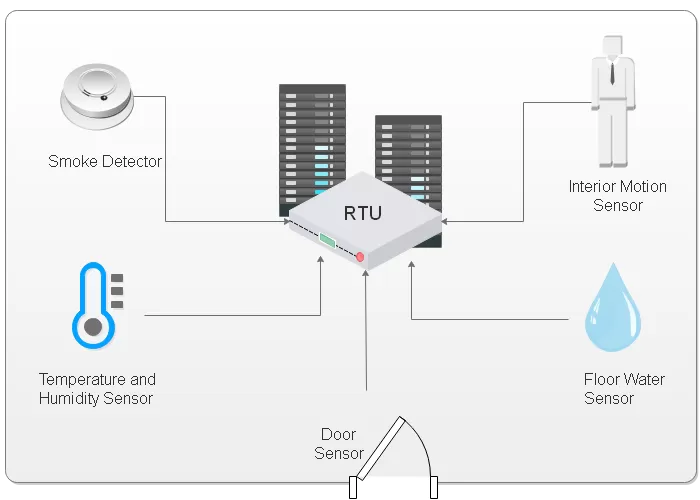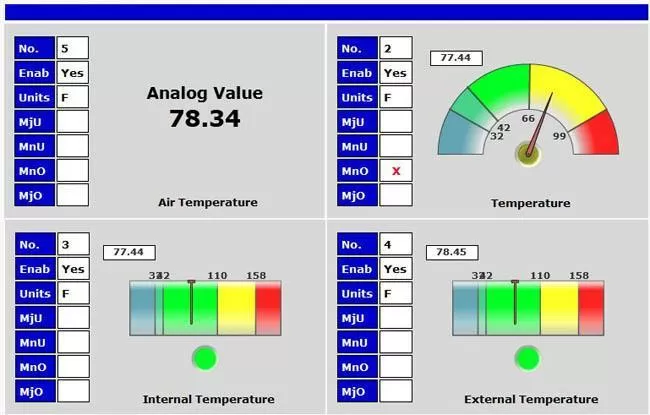Check out our White Paper Series!
A complete library of helpful advice and survival guides for every aspect of system monitoring and control.
1-800-693-0351
Have a specific question? Ask our team of expert engineers and get a specific answer!
Sign up for the next DPS Factory Training!

Whether you're new to our equipment or you've used it for years, DPS factory training is the best way to get more from your monitoring.
Reserve Your Seat TodayWhen considering the purchase of a data center monitoring system for asset management, there are several things to look for. This is a system that's supposed to last 10 years or more, so it's a purchase decision that you'll want to get right.

Let's take a wide overview of the major goals you should have for your project, then look at some specific equipment examples that are commonly used for data center monitoring.
While you're shopping around the various manufacturer offerings, you should make sure that the system is able to monitor all environmental levels your data center. This includes power utilization, temperatures, humidity levels, water leaks, and anything else that's part of the physical environment.
Environmentals are overlooked far more than they should be when people design monitoring systems. This is especially true among your younger generation of employees, where "soft" subjects like bandwidth and data errors are often the primary focus.

In my role designing monitoring systems at DPS, I frequently find that my task is to remind my clients of the very real dangers of thermal runaway, etc. It's a particular shame when something simple like undervoltage or a minor water leak remain undetected and become a service-affecting outage.
In order to monitor the environmental levels that you must track 7x24x365, you need physical sensors and a device to manage them. That device is called an RTU.
Let's take a small RTU like the TempDefender as an example. As you can tell by its name, this is a device that is largely devoted to temperature sensors for data center infrastructure management.
DPS Telecom, the TempDefender's manufacturer, chose to add support for bus-powered "D-Wire" sensors to make installation faster and easier (using CAT5e cabling and crimping tools that are easy to find in any data center).
Today, this D-Wire bus supports temperature, humidity, vibration, and many other sensor types. You also have generic analog input circuits for voltage monitoring or third-party sensors.
For equipment that latches contact closures instead of sending SNMP traps to your SNMP manager, the TempDefender can accept these traditional inputs as well.
It is important that any data center monitoring system is scalable so that it can continue to monitor all environmental elements as the data center grows. This means that no matter how much your facility changes, you will still be able to monitor it accurately and reliably.
If your system is not designed with scalability in mind, then it may mean having to replace the entire setup sooner than expected. This will cost you more money in the long run, so it's best to make sure that whatever system you purchase is up to the task of monitoring a growing facility.
It's also important that the system be able to monitor security within the data center. This can help with compliance requirements such as PCI and HIPAA. More importantly, it helps reduce the risk of malicious attacks and other security issues.
If your system can detect suspicious activity or unauthorized access attempts, then you will be able to respond quickly before those risks become service-affecting. Make sure that the system is able to monitor user activities, port scans, and so on in order to maximize your data center's security.
Performance monitoring is also a natural element of any security monitoring system, as it is another one of the "soft" concerns you must handle. The performance of your data center (including application performance), after all, is the reason you value security in the first place.
It's not uncommon to choose a hybrid approach, with a "Facilities" or similar team monitoring environmentals, then a separate "IT Security" team monitoring security with an entirely separate system.
Although disparate systems can sometimes be a wasteful nuisance, I have many clients who use a system not made by DPS to monitor IT security. Truth be told, this avoids a fair amount of clashing among internal teams with different specialties and priorities.
It's better to have two complementary data center management tools than to have two teams fumbling against each other trying to handle everything with one system.
When you're shopping for a data center monitoring system, simply make sure that you look for the features and scalability you will need in order to ensure that your setup is able to monitor all environmental levels and security issues. You'll be able to protect your facility and maximize uptime.
Of course, you chances of success will also benefit from a bit of expert advice...
Rules are excellent, and they will actually get you where you need to be more than half the time. As you know, however, there's a good chance that something unusual will come up during the course of any project. That's where a little bit of expert advice goes a long way.
Manufacturers have a variety of strategies when it comes to providing advice. Some offer paid service plans that include an expert consultant. Others do away with engineering support entirely in an effort to deliver the lowest possible price.
At DPS, we've made a conscious decision to move in the other direction. When you call us (1-800-693-0351), email us, or send us a message right here on our website, we'll get back to you quickly. Because our sales department is run by engineers rather than classic salespeople, we'll walk you through all of the pitfalls and "gotchas" we've seen during the last several decades.
You should never let any manufacturer make a final decision for you and your company. What you should do is let DPS walk you through your options so you can weigh them effectively.
I don't (yet) know where exactly you are on your journey toward a new data center monitoring system. I know that my team and I can help you clarify your goals - and reach them.
Just give us a call here at our California headquarters and factory. We'll ask you what you're trying to accomplish, then line up potential equipment matches to get the job done.
To start now, call 1-800-693-0351 or email DPS at sales@dpstele.com

Andrew Erickson
Andrew Erickson is an Application Engineer at DPS Telecom, a manufacturer of semi-custom remote alarm monitoring systems based in Fresno, California. Andrew brings more than 18 years of experience building site monitoring solutions, developing intuitive user interfaces and documentation, and opt...